
Startleet Orion and Invasion Orion by Automated Simulations (later Epyx), USA
First release : Starfleet Orion in 1978 on Commodore PET, Invasion Orion in 1989 on Commodore PET and TRS-80
Tested on : Atari
Total Hours Tested : 10
Average duration of a battle : 15 minutes to 3 hours (roughly 15 minutes by player ship)
Difficulty: Average (2/5)
Would recommend to a modern player : No
Would recommend to a designer : Yes
Final Rating: 31/100 (Invasion Orion only)
Note that all the Rating and Review posts assume that you have read the AAR, in this case starting here.
There were three scenarios remaining to be played in Invasion Orion.
The Damoclès scenario (scenario #9) features the planet Autarcia under attack by 5 Klaatu heavy ships :
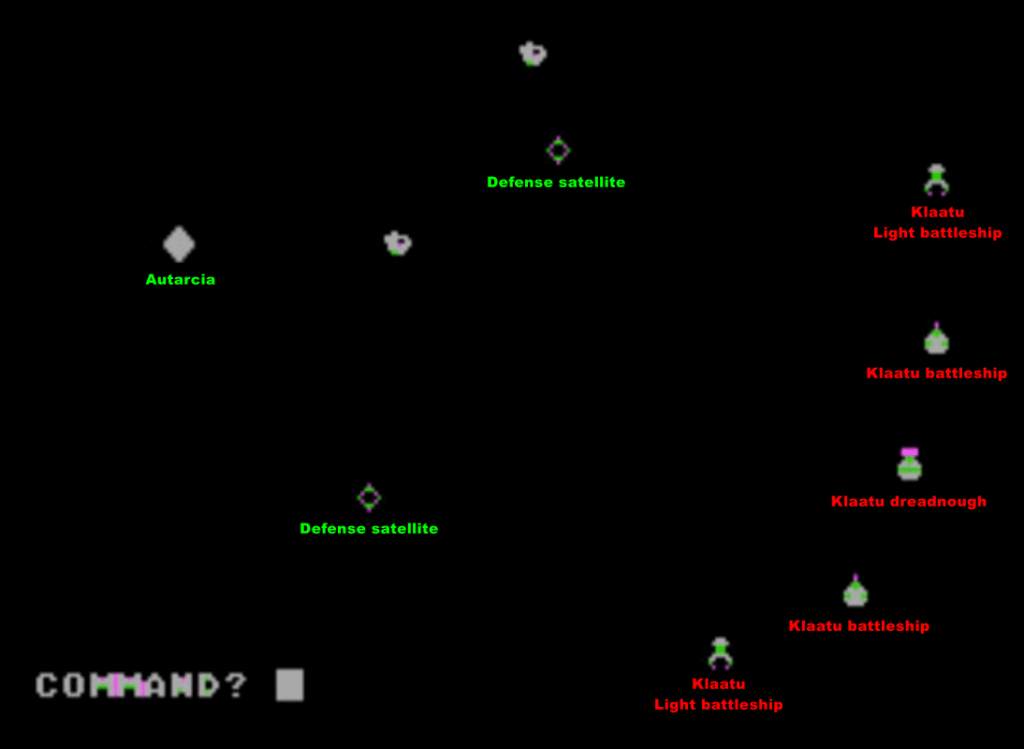
I had written a detailed After Action Report for this battle, but I took a hard look at it and decided for everyone’s sanity to skip it and to jump straight to conclusion : using the Autarcia tractor beam a lot, first on the satellites to move them away from the missile barrages, and then on the Klaatu ships to bring them in range, I won.
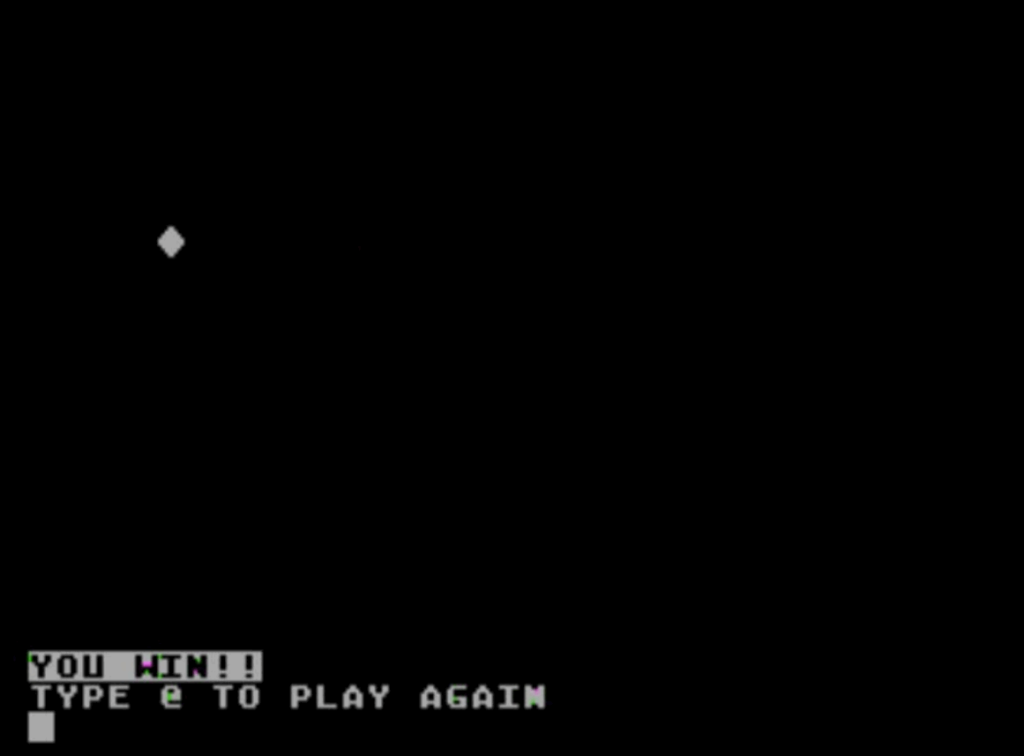
I have a pretty good excuse for not playing the two other scenarios : they were designed as cooperative scenarios anyway. In these scenarios, one player plays the Stellar Union, another the Orion Colonies as those two factions cooperate against the Klaatus – the players lose together but they may win “more” if they succeed at their individual objectives before the other player.

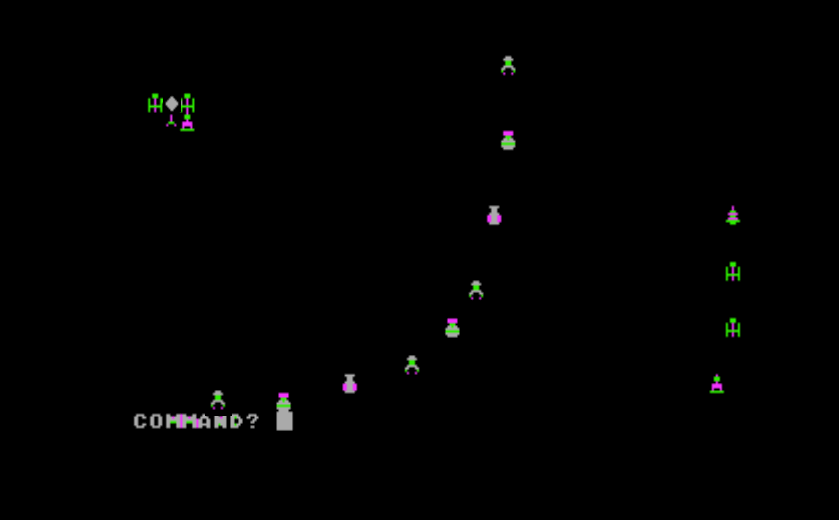
The Digital Antiquarian covers the early days of Automated Simulations in his Temple of Apshai article – in short Jim Conneley bought a Commodore PET for his Dungeon & Dragon sessions, but wanted to deduct it fiscally by creating and selling a game with the device. He was not a designer, so he enlisted one of his D&D players – Jon Freeman, for the design. Their first game was Starfleet Orion. Invasion Orion followed one year later.
Starfleet Orion has been reviewed by the Data-Driven Gamer, so I feel like I complete him nicely by playing and reviewing Invasion Orion. By chance I played Invasion Orion on Atari, a much later release (1981, Starfleet was never released on Atari), and this version had a key difference with the previous ones : instead of letters and numbers the warships are represented in the game by small icons, making my After Action Reports slightly more readable.
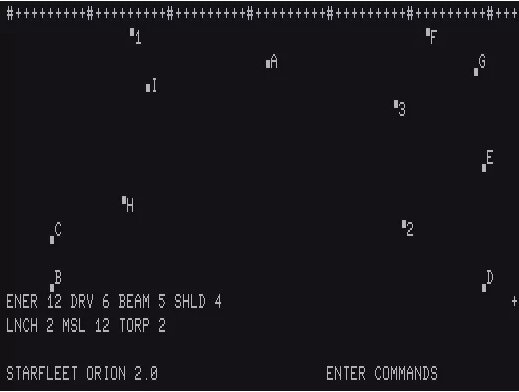
To compensate the difficulty of tracking which ship is which with only letters & numbers, Starfleet Orion was released with a ship status sheet, on which players could track their ships using a pencil. Players of Invasion Orion would not be so lucky.
Another peculiarity of Starfleet Orion is that the cassettes did not come with any scenario. They had to be created by copying parameters from the battle manual to the “scenario creation mode”, a process that could be pretty long for complex scenarios.
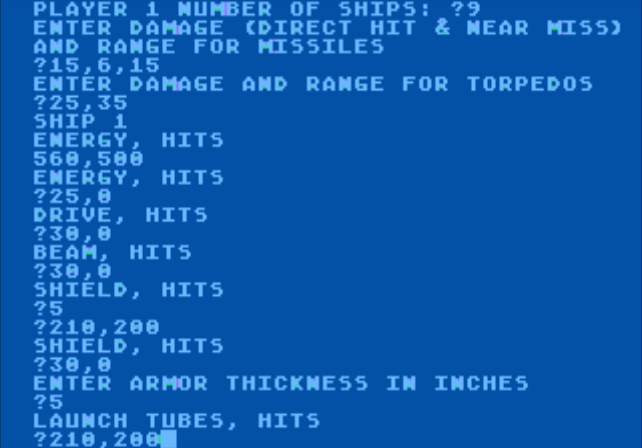
It also seemed to involve a lot of manipulation with the game cassettes, manipulations which I suspect could have led a player to overwrite the core code of the game. This may be why Starfleet Orion’s manual included the complete code in BASIC, in case the player needed to rewrite their own game.
This process was maintained in Invasion Orion (without the code in the manual), though the Apple II and possibly the Atari version came with some if not all the scenarios already embedded.
While time-consuming, it had the advantage of allowing the players to adapt the scenario to their skill or even to create new scenarios from scratch. The scenario book actually suggests a lot of possible adjustment for all its scenarios.
Final note : the game has no relationship whatsoever with Master of Orion.
A. Settings & Aesthetics
The game setting is explained at length in the Starfleet Orion and Invasion Orion manuals… but it is not very well written. Starfleet Orion’s manual is a mix of scenarios happening in the Orion universe and of scenarios inspired by the author’s favorite SF novels. Invasion Orion is fully focused on the Orion universe, but scenario backgrounds spend pages talking about anything except what is relevant to the story : in one of the most egregious cases almost two pages describing the characters playing a game of cards.

I appreciate recurring characters and recurring ships between both games. The Camelot for instance seems to have had a long, successful career.
And of course, no graphics worth mentioning.
Score : 3/20
B. UI , Clarity of rules and outcomes
The UI is one of the key weaknesses of Invasion Orion.
- When giving orders to the ships, there is no visual display of where the ship should end next turn, which means it is not uncommon to torpedo one’s own ship because said ship ended a couple tiles off to where you thought it would be. There is no way to cancel or change any instruction given to one’s ships. For instance, if you allocate 5 energy to missiles then realize that the enemy is out of range, there is nothing you can do to cancel the missile attack or move the ship to a better position. The more ships there are on your side, the worse the problem is,
- There are also a lot of problems with turn resolutions. There is no way to pause or store the turn resolution and there is no way to “inspect” enemy ships either so with each passing turn you need to remember which enemy ship has been hit and which has not been hit – provided you saw it because torpedoes go fast and beam attacks even faster.
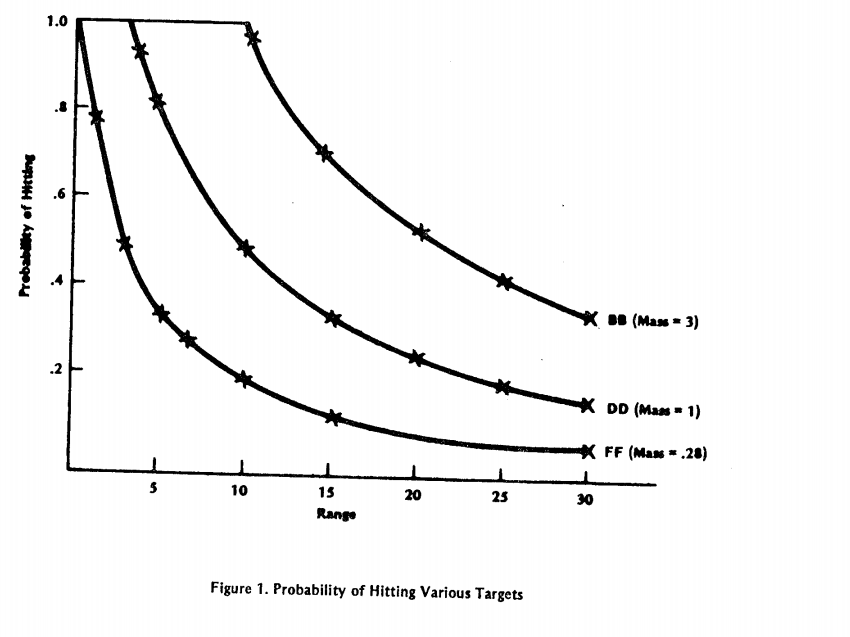
Displaying the ships as icons rather than numbers on Atari is a mixed blessing : on the one hand you immediately know which ship is a large battleship and which one is a puny destroyer, but on the other hand it makes selecting targets much harder (since the “letter code” you need to input on your keyboard to select a ship is not displayed), and when two enemy ships of the same type are close by, good luck trying to follow which one is damaged and which one is not.
Score : 2/20
C. Systems
That’s where the game shines. The system of energy allocation works, and you will have to make important decisions every turn : even with ships in perfect condition you can only allocate max power to 2 of the following 3 : movement, shield, attack (beams and/or missiles).
- Movement protects you well against missile barrages, but you are always exposed to a lucky hit and to beam weapons. Of course, you could also push the shield up, but then you are not really fighting,
- Shields seem the obvious choice, but if you are not moving, they will not resist against a missile barrage,
There is another arbitrage with missile usage : it can be smart to use missile defensively against torpedoes, but it also stops you from using your own torpedoes, and it means you send one less missile by ship you defend.
Finally, the game also has a long term management of missiles and torpedoes. Using the missiles in barrage early on means you will aim at mobile targets who are going to be hard to hit, so it is wise to keep quite a few missiles to finish off damaged ships, but on the other hand you need to decrease the combat capacity of the enemy ships as soon as possible, and who knows how many ships you will have left after a couple turns of combat… decisions decisions.
And this is before you account for the really tacticool stuff :
- tractor and pushing beams (which can allow you to push enemy ships into enemy torpedoes, bring enemies in range, push one of your super light fighters behind the enemy ships for a torpedo attack, …),
- layered defense (ships at the back sending defensive missiles for ships on the front, so those ships at the front can focus more on attack), …
The game may not be easy to play, but it is hard to master – in a good way.
While I give the game almost full points for the low-level system, the game is missing a strategic layer, though you could possibly simulate it with the scenario designer. In a more modern game, I would also have expected more “special attacks / capabilities” for some ships.
Score : 10/20
D. Scenario design and balancing
The scenarios in Invasion Orion are pretty varied in terms of objectives, and overall pretty interesting to play. The game also comes with a scenario designer, so you can adjust or create scenarios as much as you want, though scenarios with too many ships are tedious to play due to the dreadful UI, and scenarios with too few ships will probably all look alike.
The AI is solid – the best AI I have covered in this blog so far. The manual states that at Intermediate or above difficulty, it cheats a bit by having some information about your movement, but I would never have figured it out myself so it is well-done. The only limitation with the AI is that it only understands one objective : destroy everything the player has, so it ruthlessly attacks asteroids if those are “allocated” to the human player (all objects in the game, even inert, must be allocated to one of the two players) and it cannot play “escape” or “escort” missions.
Score : 12/20 (for Invasion Orion only of course, Starfleet Orion lacks any AI)
E. Fun and replayability
After some effort to understand the game, Invasion Orion becomes fun… up until the player launches a scenario with quite simply too many ships to manage. Sadly, scenarios above let’s say 3 or 4 ships are more about fighting the UI than fighting against the other side. On emulators, some of the game’s shortcomings can be limited by the use of save/load states, but I cannot give points for that.
Replayability is therefore limited to how many scenarios for 3 or 4 ships you can imagine against an AI which only knows how to attack.
Score : 4/20
F. Final rating
31/100 for Invasion Orion, the game is really pulled down by his UI, which impacts of course its UI rating, but also its replayability. I believe that a game using its ruleset with 2000 standards on UI, graphics, strategic layer, … would be a memorable game.
Still, pretty high score for a game released in 1979.
Contemporary reviews
Starfleet Orion was released in a time without video game magazines, and reviews were rare. The only one I could find (thanks to Wikipedia) is Alan Isabelle’s in The Space Gamer (August 1980). His conclusion : “The game has very few weaknesses […] I highly recommend it“.
Invasion Orion got a bit more reviews, all short and to the point. Computer Gaming World first issue (1981) was published too late to review the game, but in September 1982 the game still had enough traction that the magazine proposed “new scenarios for Invasion Orion“. In reality this article explained the weaknesses of the AI and how to design ships and fleets that would minimize those weaknesses (in short powerful beam weapons, and either all torpedoes or all missiles ships, as the AI would only use one every turn). It was the swan’s song : by then, Epyx had started to pivot out of wargames, and 1983 is the last year in which Invasion Orion appears in Epyx‘s catalog.
There would be no other games in this universe, so alas it is the last time we will hear about the Klaatus.